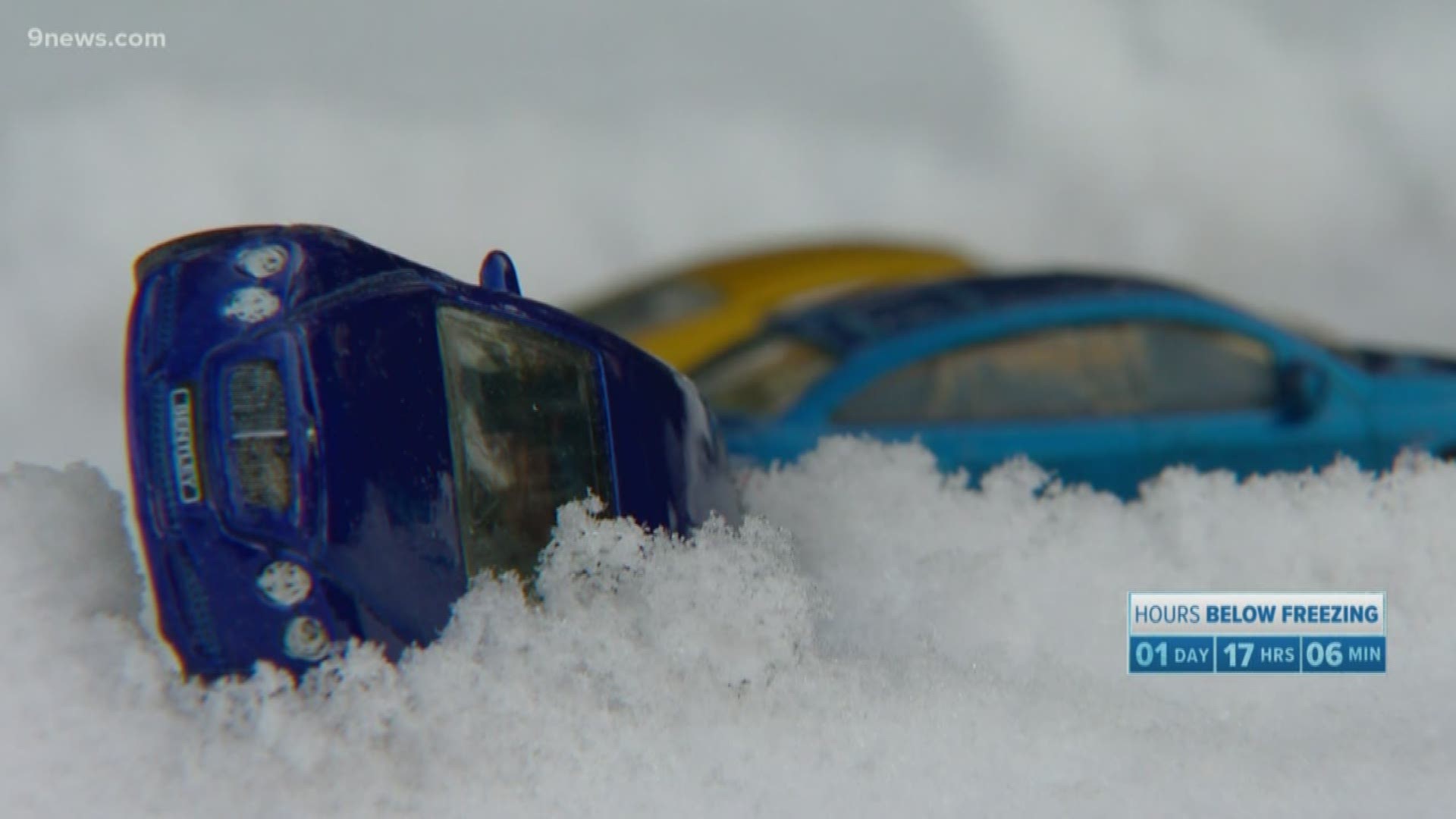DENVER — As winter weather arrives in Colorado and the implementation of Colorado's new traction law begins, commuters are transitioning to either all-season or winter tires.
The law mandates that vehicles always need to have either snow tires or carry some sort of traction device (like chains or tire socks) if they’re not four-wheel drive or all-wheel drive. The law is in effect from September to May, and it applies to drivers on I-70 between Dotsero and Morrison.
Tires also have to have a tread of three-sixteenths of an inch. Traction rules can still go into effect on any state corridor at any time
So, which tires are considered the best for your type of vehicle during the winter season?
According to the AAA website, winter tires are made for the types of weather we receive in Colorado, but you must take your type of climate into consideration.
Below are some common questions — and answers — regarding tires.
What are all-season tires?
All-season tires offer additional traction in winter weather conditions, according to AAA. Those marked with an "M+S" on the tire's sidewall help with better traction. Although these tires work well on packed snow and mud, their performance on the ice, slush or very cold climates isn't guaranteed.
"You want to shop specifically for all-seasons that have an “M+S", a mud-plus-snow designation," said Skyler McKinley, with AAA Colorado. "Those tires will give you a little extra traction when we’ve got wintry conditions."
What are dedicated winter tires?
Dedicated winter tires have a "three-peak" mountain and snowflake symbol and make winter driving much safer, according to AAA. Dedicated winter tires can perform better in cold environments compared to all-season tires, AAA said.
“If you’ve got a 2-wheel vehicle, I really can’t stress this enough, you should invest in snow tires," McKinley said.
How do I pick the right tire?
AAA recommends comparing different brands and models before making the purchase. The price of your tire does not imply its quality or performance, AAA said.
Always make sure you have the specifications of your original tires when picking out winter tires:
- Diameter
- Width
- Speed rating
- Load index
AAA said to switch out all four tires and make sure they are the same brand and model. Switching just two tires could affect the vehicle's performance and lead to unsafe driving conditions.
AAA also said to maintain the condition of the tires to improve the vehicle's performance and extend the tire's life.
Winter tires help reduce the chance of collision, auto body repair and the quality of driving during the colder months in the year, according to AAA.
McKinley said the odds of you seeing a car in a ditch or sliding off the road due to the winter conditions are likely.
“No matter where you drive in the metro area, up in the high country, odds are pretty good you’re going to see a car in a ditch or sliding off the road, or you might yourself have traction problems, especially off the line when you go through a green light," McKinley said.
Although you might feel equipped for winter driving conditions, always consider speed as a contributing factor for accidents.
“The real culprit, even if your car is totally, perfectly equipped, is speed. Just because your car can handle these conditions doesn’t mean it can handle stopping in them," McKinley said. "So, that’s why no matter what your tires are, no matter what your vehicle is, you should plan on going slow whenever we’ve got slippery or icy conditions."
If you don't have the chance to purchase your tires before the next storm, consider staggering your drive and avoiding rush hour, McKinley said.
“If you’re worried about your driving abilities, and you don’t have time to get the right tires on your vehicle, stagger your start time so you’re not driving at rush hour when every other vehicle is on the road and you’re more likely to get in a crash," McKinley said.
SUGGESTED VIDEOS | Local stories from 9NEWS

